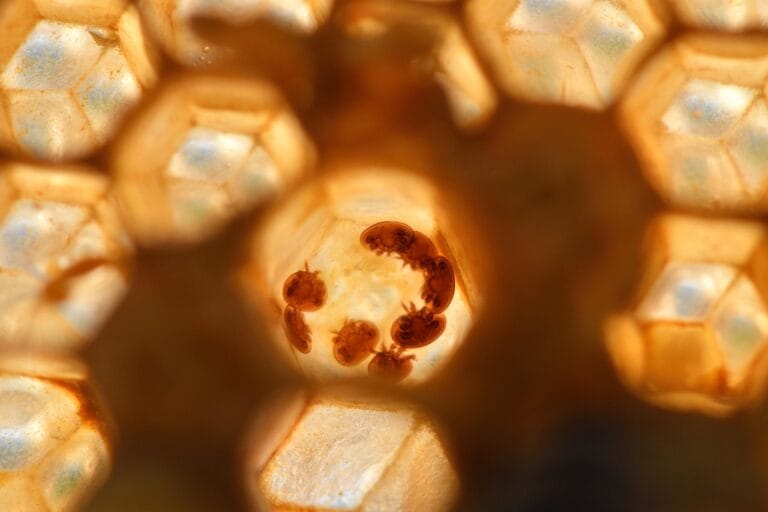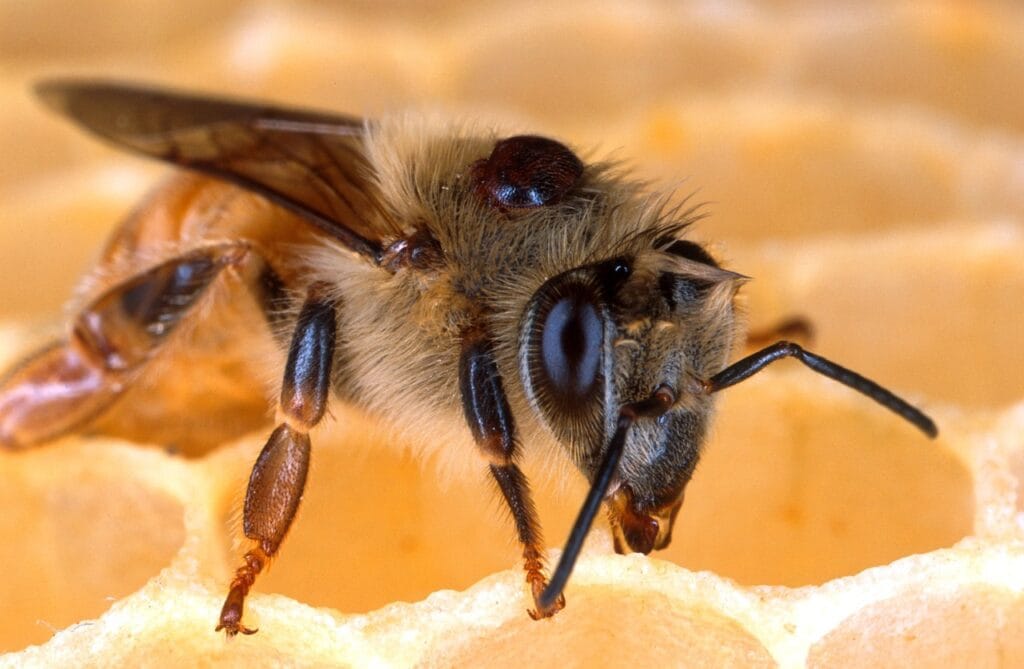What are the most effective integrated methods to control Varroa mites in my hive?
The most effective integrated methods to control Varroa mites involve combining multiple approaches—known as Integrated Pest Management (IPM)—to lower mite populations and delay resistance development.
Evidence-based best practices include:
1. Rigorous Monitoring
- Use consistent monitoring techniques such as alcohol washes, sugar shakes, or sticky boards to determine mite levels.
- Take action when infestation exceeds threshold levels (commonly 2–3 mites per 100 bees)[1][2].
2. Mechanical and Cultural Methods
- Drone Brood Removal: Insert special drone frames, allow bees to fill with drone brood, then remove and destroy capped drone brood to physically eliminate mites, as they preferentially reproduce in drone cells[3][4][1].
- Screened Bottom Boards: Install screens so fallen mites drop out of the hive, preventing reattachment, though alone this provides modest mite reduction[3][4][1].
- Periodic Brood Breaks: Implement brood interruption via queen caging or trapping comb methods, then apply oxalic acid when all mites are exposed on adult bees—this combination is highly effective[5].
- Rotation/Modification of Brood Combs: Rotating out old brood combs can limit mite buildup[3][4].
- Grooming Stimulation: Dusting bees with powdered sugar can promote mite-grooming and dislodgment, especially in periods of low or no brood[6][4].
3. Genetic/Cultural Practices
- Use mite-resistant bee strains (e.g., VSH—Varroa Sensitive Hygiene—or Russian bees) to slow mite population growth and possibly reduce treatment frequency[1][7][8].
- Maintain strong, healthy colonies and avoid practices that weaken bees.
4. Chemical (“Soft” and Hard) Treatments
- Organic Acids: Use formic acid (effective against mites under the cappings, but temperature dependent) or oxalic acid (best used when colonies are broodless); both are considered “soft” chemicals with minimal residue[2][1].
- Essential Oils: Thymol products (Apiguard, ApiLife Var) are effective but do not penetrate brood cappings; may cause robbing or increased bee defensiveness under some circumstances[2][1].
- Hop Beta Acids: Safe for use during honey flow but require repeated applications when brood is present[2].
- Synthetic Chemicals: Amitraz (Apivar) is highly effective but should be used in rotation with other products to prevent resistance; do not use repeatedly as a single mode of control[1][2].
5. Rotational Use and Integration
- Rotate Treatments: Avoid using one active ingredient repeatedly to reduce resistance risks and to maintain long-term efficacy of all options[1].
- Combine several practices (mechanical, cultural, chemical)—no single method is fully sufficient long-term[1][5][2][8].
- Treat all colonies in an apiary simultaneously if thresholds are reached to avoid reinfestation[1].
6. Brood Interruption with Treatment
- Recent studies support that queen caging or trapping comb (brood interruption) followed by oxalic acid when the hive is broodless maximizes mite kill by exposing all mites at once, achieving high control rates—a particularly effective strategy incorporated into the IPM cycle[5].
Key Caveats & Best Practices:
- Regular monitoring is critical, and timing treatments with colony and seasonal cycles improves outcomes.
- Closely follow all label instructions for treatments to protect bees, people, and food safety.
- Effectiveness varies by region, product, and colony conditions—IPM requires adaptation and ongoing learning[1][2][5][9][8][4].
Summary
Using these integrated methods in combination provides the strongest defense against Varroa and maintains hive health over time.
⁂
- https://honeybeehealthcoalition.org/wp-content/uploads/2022/08/HBHC-Guide_Varroa-Mgmt_8thEd-082422.pdf
- https://extension.psu.edu/methods-to-control-varroa-mites-an-integrated-pest-management-approach
- https://www.ento.vt.edu/the-bee-group-at-vt/beekeeping/mites.html
- https://www.perfectbee.com/a-healthy-beehive/threats-to-bees/best-practices-to-reduce-the-threat-of-varroa
- https://pmc.ncbi.nlm.nih.gov/articles/PMC10889759/
- https://extension.unr.edu/publication.aspx?PubID=2156
- https://www.northeastipm.org/ipm-in-action/the-ipm-toolbox/the-use-of-ipm-in-beekeeping-to-control-parasitic-varroa-mites/
- https://www.reddit.com/r/Beekeeping/comments/1klljvh/in_your_opinion_what_is_most_effective_and/
- https://www.youtube.com/watch?v=aFlLPZ5KbgU



